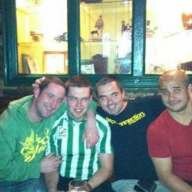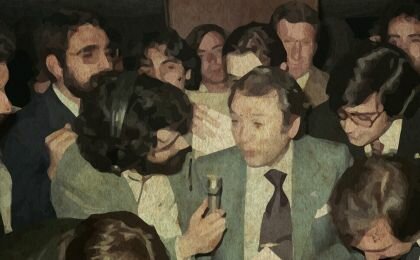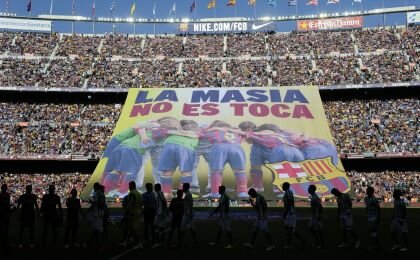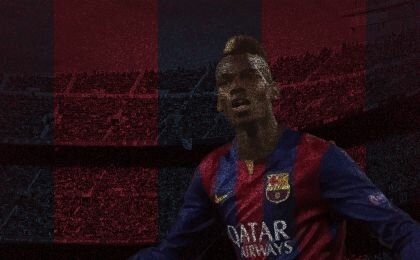 history | 2015-07-10
history | 2015-07-10
The story of Barcelona’s murdered president
Josep Sunyol was in charge for just a year, but left a great legacy
Thanks to an excellent initiative by Manel Tomàs (head of the club’s documentation center), obtained with the help of Vice-President Carles Vilarrubí, Barça released l’any Sunyol (the Sunyol year). A year of celebration and restoration of a leading character in the club’s history begins today. As you already know, the Camp Nou box will now carry his name as a tribute to the murdered president. Unfortunately, knowledge of the story continues to be the great elephant in the room for culé fans and socios. Passion for the blaugrana colors does not correspond with knowledge of the biographies which, with talent and effort, have brought us here. Who exactly was Sunyol? The answer is obvious: the president who was shot without trial in the Guadarrama Mountains on August 8, 1936, a few weeks after the beginning of the fateful Civil War. While traveling in a car, the driver took a wrong turn which had a fatal outcome. President Sunyol, three-time MP in the Spanish Parliament for Esquerra Republicana de Catalunya, was just 38 years old. The future of a shining light had been cut short; a high-flying nationalist Catalan politician, a director with very clear ideas of what FC Barcelona represented and where he wanted to take them.
A life lived to the full
Sunyol’s life was dramatically short, but highly satisfactory. He was an industrialist with a favorable economic situation, largely devoted to the sugar business, a source of income which provided him with an ironic alter ego, “l’altre Noi del Sucre” (the other Noi del Sucre), in order to distinguish him from Salvador Seguí. To briefly review his life story, in 1930 he founded the “La Rambla” weekly newspaper, which had “Esport i ciutadania” (Sports and citizenship) as its motto. A Catalan nationalist of strong convictions, he joined the board (then chaired by Arcadi Balaguer) in April of 1928, when he was just 30 years old. On July 27, 1935, he became president of a club in a period of upheaval, still affected by the loss of football fans caused by the arrival of the Republic and suffering the consequences of sporting failure which came as a result of not being able to successfully plan for life after the splendid team from “L’edat d’Or” (the Golden Age), a team which contained Samitier, Piera, Walter, Sagi and so many others. His predecessors failed and Sunyol, once he took on the role of president, laid the foundations for a team which was young, full of potential and contained lots of promising home-grown players.
Inconsistency
Now, two young players of outstanding quality were on the club’s payroll; Josep Raich, a farmer’s son from Molins de Rei, and Josep Escolà, from Sants and who would soon be baptized “El Mestre” (The Master), or “El Catedràc” (The Professor”), because of his great class. Ferenc Plattkó, the club’s former goalkeeper, was the manager and the socios in Les Corts were pulling their hair out because of the infuriating inconsistency of a team which was still young, unsettled and lacking in experience; capable of giving exhibitions but also capable of suffering dramatic defeats. There were many names in the squad that guaranteed a future and enough talent to ensure that the club would once again be challenging for La Liga. Under Sunyol’s command, the team won two Catalunya championships, a sub-championship of the Spanish cup, and the feeling that the best was yet to come. History, namely the outbreak which would serve as a prologue and a rehearsal for World War II, thwarted these hopes and aspirations.
Recalling the list of footballers brings back good memories: Nogués the goalkeeper, Raich, Pedrol, Arana the great winger, Martí Ventolrà, the Austro-Hungarian giant Berkessy, the Costa Rican goalscorer Alejandro Morera, the excellent captain, Zabalo, the winger (and future doctor) Cabanes, the Basque Lecuona, the striker Ramón… In the 1935/36 season, Patrick O’Connell, renowned manager who had success at Betis, took charge of the Barcelona dugout and approved the signing of two youngsters from Girona who had huge futures: Domènec Balmanya and the goalkeeper, Iborra, who was later permanently exiled in Mexico and indirect architect of the conciliatory tour of ’37 of that country and the USA.
The Zamora final
In the only full season of Josep Sunyol’s presidency, Barça got to the final of the Copa de España, played in Valencia on June 21, 1936. With the deeply felt absence through injury of Zabalo in defense, O’Connell played a team for the future, made up of Iborra in nets; Areso and Bayo in defense; a strong, tenacious and hardworking midfield of Argemí, Franco and Balmanya, and the twinkle-toed forward line formed by Martí Raich, Escolà, the Uruguayan Enrique Fernández and Munlloch. In front of them was a Real Madrid side on a historic day since Ricardo Zamora, the legendary goalkeeper, had announced that he was retiring after the match, making him the main hero of the day, just like he had been in Catalan and Spanish football for the last 17 seasons.
In an end-to-end game, Madrid went 2-1 up and was enduring the onslaught of a Barça side in full-on attack. In virtually the last minute of the game, with the blaugrana scattered over Zamora’s goalmouth, the ball fell to the feet of Escolà. Unmarked and well-positioned in the area, “The Professor” opted for a strong shot, a “daisy cutter”; low, very hard, skimming the surface of the pitch and headed towards the bottom left post defended by “The Divine One.” Through pure intuition and experience, Zamora had already dived before the ball was on its way to the net and, in the middle of a cloud of dust, made the last great save of his career. Rather than being content with clearing the ball, he caught it. And this photo, which was published everywhere, represents the symbolic goodbye to a legend who put a lid on Catalan disappointment. This new Barça side were unable to win a state title at the first attempt. Four weeks later, the military revolted. Football had ended and a real drama was beginning.
Sport and citizenship
Josep Sunyol (then Suñol in pre-normative Catalan) began to turn the club’s delicate economic situation around. Obviously, his tenure ended up being frustrated, he could only preside over the club for three months and it was part-time, as it were. Even still, he was able to partially develop his ideas, consistent in believing and promoting that playing sports perfectly represented the values of a responsible citizen. Sport had to project principals, values, civility, the idea of progress, respect, tolerance, democratic spirit and whatever etcetera the reader would like to add.
“La Rambla” helped to popularize the motto “Esport i ciutadania”, accompanied by another high-level ideologist, Pompeu Fabra, then president (a role that is little known in his life story) of the Unió de Federacions Esportives Catalanes (UFEC). According to the club’s own website, they were “great promoters and defenders of the fullest extent of using sport as a social strategy to encourage civility.” A fascist atrocity cut short the social influence of a man destined for great things before he even reached 40 years of age.










